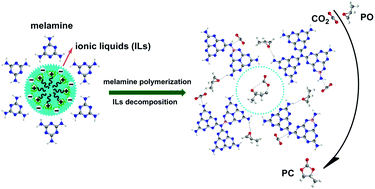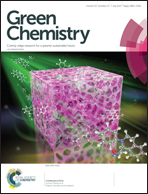Boron-doped melamine-derived carbon nitrides tailored by ionic liquids for catalytic conversion of CO2 into cyclic carbonates†
Abstract
A new approach to tailoring edge active groups of graphitic carbon nitrides for catalytic conversion of CO2 into cyclic carbonates was proposed in this work. To improve the catalytic performance, boron-doped melamine-derived graphitic carbon nitrides (MCNB) with numerous exposed edge defects were prepared by using 1-butyl-3-methylimidazolium tetrafluoroborate (BmimBF4) as the soft template and boron source. Different mass ratios of BmimBF4 to melamine were explored for MCNB preparation, MCNB(x) (x is the mass ratio) with different polymerization degree, pore structure and boron doping content were obtained, and the relationship between MCNB properties and the corresponding catalytic activity was then investigated. With low polymerization degree, abundant meso-macroporous structure and small amounts of boron (<1.59 atm%) doped in the skeleton, MCNB(0.01) exhibited better catalytic performance and could be suitable for various epoxide substrates with the yield of cyclic carbonates up to 89.0% at 130 °C in 6 h. According to the XPS analysis and DFT calculation results, the active centers were confirmed to be the partially-condensed amino groups in edge defects, which were enhanced by moderate doping of boron in the skeleton.



 Please wait while we load your content...
Please wait while we load your content...